Featured Site of the Month — CCD Astrophotography
"God created the Universe around us . . . I'm just documenting the event"
— Richard Yandrick
Welcome to A Universe in Time's Site of the Month. June and July's offering is in the category of CCD Astrophotogrphy and Imaging and this month's site owner is no stranger to either. His name is Richard Yandrick and on August 30, 2005 he achieved some unexpected fame. On that day, he found out that his submitted image of only two days prior was posted on one of astronomy's busiest website ever created: The Astromony Picture of the Day, or simply APOD.
"That image of Alberio was taken 4 years ago," writes Richard Yandrick, "while I was working with a 10" Newtonian I had built for CCD imaging. Because the color contrast between the two stars was so dramatic, I decided to submit it to the APOD site. Two days later they posted it - which was quite a thrill." The image, shown below, is dramatic indeed. [1]
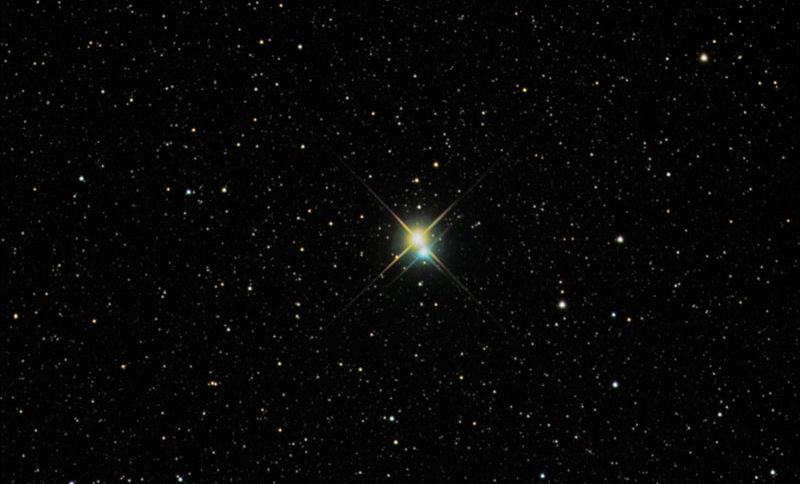
Seen above is the binary stars Albireo A & B, considered by most stargazers as astronomy's most beautiful pair. Image © 2005 by Richard Yandrick.
Black & White and Just as Sharp
Tools of the Trade that Create an Image
The Telescope
The CCD
One of the great innovations in amateur astronomy has been the Charge Coupled Device or CCD. It has put the power of professional based astronomical observatories and their imaging capabilities into an afforable and compact package. Writes John Bohannon, for sciencemag.org, on the workings of such devices:
"In traditional photography, photons trigger a chemical reaction in the film that, after several steps of development, produces metallic grains that add up to an image. But in a CCD camera, incident photons directly create an electrical pulse in a circuit that can be recorded on a computer as a pixel. The boost in efficiency—CCD cameras detect 70% of photons compared with film's 2%." [3] Richard's equipment is a tad more; much more as a matter of fact. In the field of astrophotography the technological requirement is two-fold — the camera and the telescope and this, as anything else does, takes the right set of tools, knowledge and experience. In detailing the instruments he employs, Richard writes:
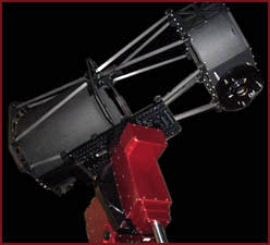
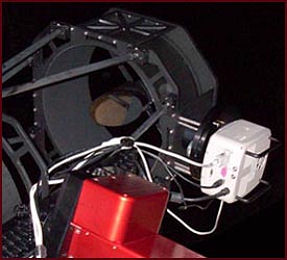
"At present, CCD imaging is being done with a carbon fiber truss, 12-1/2" f/4 corrected Newtonian telescope I completed building in 2008. It was quite a challenge, and involved a bit of custom design and fabrication of truss plates, truss components, etc. The results have been an extremely stable focus and a vert rigid OTA structure. On this scope, the imaging train is a 3" Keller corrector, PDF focuser, and Sbig STL11000 camera with AstroDon L,R,G,B, and Ha filters installed. The primary mirror is a 12-1/2" f/5 from R.F. Royce and a 5" secondary mirror from Ostahowski Optics. This all sits atop a Paramount ME, utilizing a variety of software for control and acquisition including TheSky6/Tpoint, MaximDL, FocusMax, AAG Tpoint Mapper, PinPoint Astrometric engine, and CCDautopilot." Richard obviously knows what he is talking about as the images in our next section well illustrate. For a more thorough review of Richard's equipment
click here.
The Images of Richard Yandrick
From M81 & M27
to the cosmic NGC 3628
M81

What measures 70,000 light-years across, is a mere 12 million light-years away, is gravitationally interacting with another galaxy, has given birth to numerous black-holes within its many binary star systems and includes its very own central, super-massive black hole that's over 70 million solar masses? Galaxy M81 of course. Notes Richard,
"M81 is a beautiful spiral galaxy in the constellation Ursa Major (Big Bear), or the Big Dipper, at a distance of 12 million light years. This image was obtained by combining 70 minutes of Luminance and 5 minutes each of R,G,B binned 2x2 with a 10" f/5 corrected Newtonian / Sbig ST2000 camera." You can view Richard's larger image by
clicking here. Image © 2005 Richard Yandrick.
M 81 is a LINER-type Active Galaxy Nucleus located at RA 09 55 33.17306 and Dec +69 03 55.0610. It has a Radial velocity of -42 km/s and Redshift
z of z = -0.000140, with a morphological type of Sb and an angular size, in arcmins, of 22.38 11.48 [ang.deg.] 157. Other names/designators include IRAS 09514+6918, LEDA 28630, Bode's Galaxy, NGC 3031 and UGC 5318. It has been the object of various black hole studies:
M81 at NASA,
Liu & Di Stefano, 2008 and
K. K. Ghosh et al. 2001
[4]
A little about our Site of the Month Astrophotographer Richard Yandrick
Some of the greatest astronomers in the history of our hobby and science started off far afield from the greatness they are now known for — Galileo was an instrument maker, Nicholas Copernicus was anything but, Johannes Kepler wished to be a Lutheran pastor of a church during his formal education and Ejnar Hertzsprung, who's education was in chemistry, acheived preeminence for developing one of the most powerful tools in astronomy, the H-R diagram, even achieving an appointment as director of an observatory without ever having attended a single lecture in astronomy! Indeed, with the advent of afforable technology, "professional science" has turned to the "amateur astronomer" in order to further add to our knowledge and understanding of the universe ( see:
The Return of Amateur Science —
Tooled-up amateur astronomers...,
Amateur astronomers capture Jupiter, Charon )
As for our site of the month astrophotographer, Richard Yandrick's vocation is a little closer to the profession; he works as a principal for an engineering and surveying firm, but that just makes the math a little eaiser. Building your own system in order to find an object located in an area 13 billion light years or so big in order to photograph it with perfect clarity is another subject of art, skill and dedication. Not only that, but consider what it has taken science decades of research, billions of dollars, thousands of professional PhD's and a world of accredited institutions of science to achieve, then you can all the more appreciate the results that Richard, and others like him, have achieved for less than thirty-thousand dollars and three hours of pure enjoyment; ok, and some hard work too! Put in another way, Richard's been eight years in the hobby of CCD astrophotography and what he has accomplished is remarkable indeed, including his famous 380 light-years distance photo of Albireo A & B ( above ).
Some Q's & A's
- Q: Do you teach, demostrate or give advice on the internet or at public functions regarding your hobby (club functions, astronomical societies etc)?
A: I have in the past, in a few different venues.
- Q: How long have you been pursuing ccd astrophotography?
A: Since 2001.
- Q: Do you have any formal training or education? Are you self-educated?
A: AAS in Civil Engineering, lots of secondary education, and for the astro-hobby, self educated
- Q: What has been your astronomical work since the publication of your image of Albireo A & B at the Astronomy Picture of the Day website?
A: Still pursuing more imaging, and responding to many (40+) universities, publications, museums, etc. that use the image [Albiero A & B].
- Q: What is your hands-down favorite stellar object?
A: Oh my. Well, I enjoy stellar nurseries with their glowing Hydrogen-Alpha surroundings (ie: trapezium in Orion Nebula), and colored pairs of double stars, as they provide a wonderful contrast. (ie:Albireo)
- Q: Is the equipment layout on your website still the current set of tools you employ?
A: For the most part, it's still the same arrangement. I did rebuild the secondary to house a 5" secondary now, and machined a new set of stainless double seconday vane arrangement. This new assembly keeps the heavy secondary mirror stable through all orientations in the sky.
- Q: What is in the future for Richard Yandrick, astronomically speaking?
A: Continue to image, hone my imaging skills, utilize more in depth functions of software, with this years goal being to work with my Paramount and scope setup to approach the ability to image unguided for 10 minutes.
© Legal Copyright Notice:
Unless otherwise stated, all images are the sole copyright © property of
Richard Yandrick and may not be reproduced or copied in any manner from herein without prior written permission of the owner, Richard Yandrick. The images used on the above page(s) are for the sole purpose of information and display at A Universe in Time website and have been used with the kind permission of Richard Yandrick.

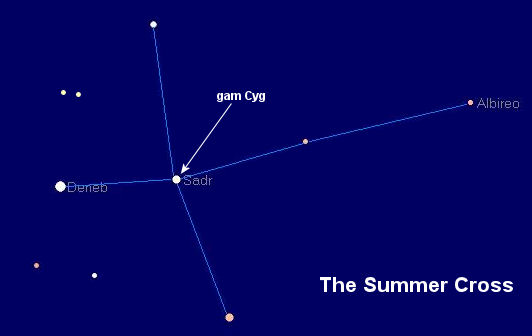
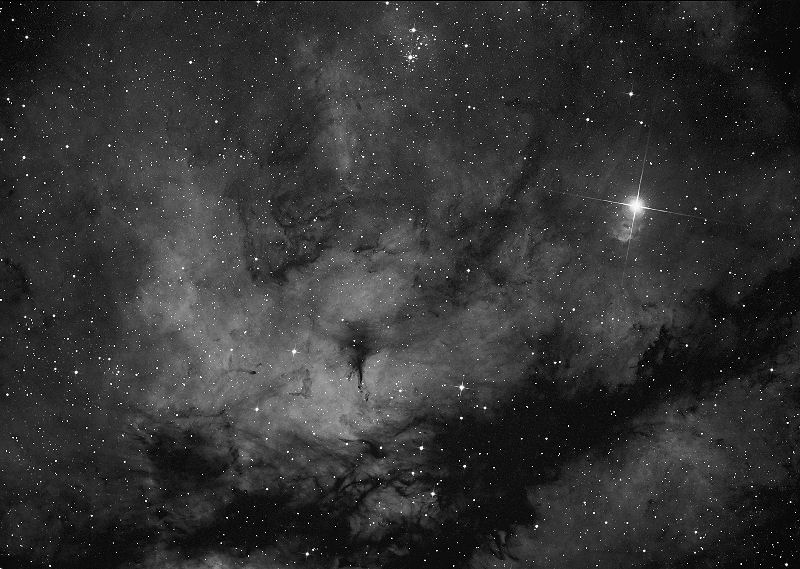

 "At present, CCD imaging is being done with a carbon fiber truss, 12-1/2" f/4 corrected Newtonian telescope I completed building in 2008. It was quite a challenge, and involved a bit of custom design and fabrication of truss plates, truss components, etc. The results have been an extremely stable focus and a vert rigid OTA structure. On this scope, the imaging train is a 3" Keller corrector, PDF focuser, and Sbig STL11000 camera with AstroDon L,R,G,B, and Ha filters installed. The primary mirror is a 12-1/2" f/5 from R.F. Royce and a 5" secondary mirror from Ostahowski Optics. This all sits atop a Paramount ME, utilizing a variety of software for control and acquisition including TheSky6/Tpoint, MaximDL, FocusMax, AAG Tpoint Mapper, PinPoint Astrometric engine, and CCDautopilot." Richard obviously knows what he is talking about as the images in our next section well illustrate. For a more thorough review of Richard's equipment
"At present, CCD imaging is being done with a carbon fiber truss, 12-1/2" f/4 corrected Newtonian telescope I completed building in 2008. It was quite a challenge, and involved a bit of custom design and fabrication of truss plates, truss components, etc. The results have been an extremely stable focus and a vert rigid OTA structure. On this scope, the imaging train is a 3" Keller corrector, PDF focuser, and Sbig STL11000 camera with AstroDon L,R,G,B, and Ha filters installed. The primary mirror is a 12-1/2" f/5 from R.F. Royce and a 5" secondary mirror from Ostahowski Optics. This all sits atop a Paramount ME, utilizing a variety of software for control and acquisition including TheSky6/Tpoint, MaximDL, FocusMax, AAG Tpoint Mapper, PinPoint Astrometric engine, and CCDautopilot." Richard obviously knows what he is talking about as the images in our next section well illustrate. For a more thorough review of Richard's equipment  What measures 70,000 light-years across, is a mere 12 million light-years away, is gravitationally interacting with another galaxy, has given birth to numerous black-holes within its many binary star systems and includes its very own central, super-massive black hole that's over 70 million solar masses? Galaxy M81 of course. Notes Richard,
What measures 70,000 light-years across, is a mere 12 million light-years away, is gravitationally interacting with another galaxy, has given birth to numerous black-holes within its many binary star systems and includes its very own central, super-massive black hole that's over 70 million solar masses? Galaxy M81 of course. Notes Richard,